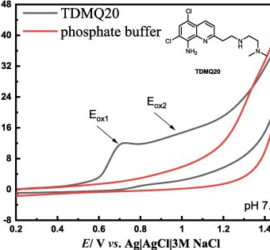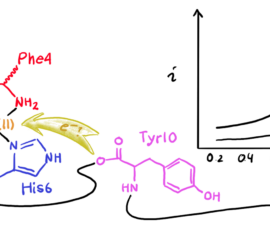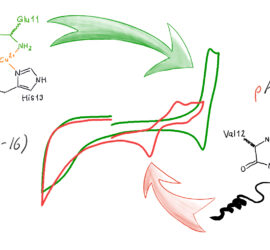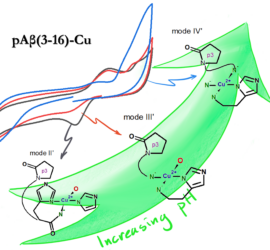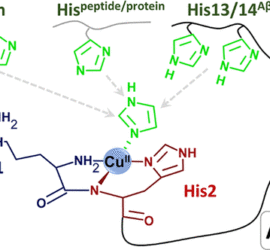Collaboration is extremely important to us. Gaining new knowledge, both practical and theoretical, is also extremely important. For this reason, Magda went on a 6-month internship to Professor Alvaro Colina’s group in Burgos, Spain. The cooperation turned out to be very successful because shortly after her return our first article […]
β-amyloids
The next paper in Magda’s series of articles on the redox behaviour of β-amyloids relevant for Alzheimer’s disease has just hit the press. Here we have been looking at how the presence of a redox-active amino acid, tyrosine (Tyr), affects the oxidation of a Cu(II) attached to the amino terminus […]
Sometimes publishing doesn’t go according to plan…. Our newly published article in J. Electroanal. Chem. was supposed to have been published before the follow-up in ChemElectroChem. We thought it made sense to first study the shorter amyloid and then follow with a study of the longer one. Some review delays […]
Over the last year, Magda has been working with bachelor student Natalia to investigate the redox behaviour of different β-amyloids. In her recently published paper she demonstrates a significant difference in the redox behaviour of copper complexes with peptides associated with Alzheimer’s disease (AD). AD is a neurodegenerative disorder and […]
More β-amyloid news! Magdalena got a small grant (Miniatura) to conduct research focused on a selected group of N-terminal β-amyloids, which differ significantly in the way of coordinating copper (II) ions. What are β-amyloids? According to one of the most popular theories they are peptides responsible for the development of […]
Alzheimer’s Disease (AD) is one of the most common neurodegenerative diseases. The first time it was described 100 years ago; however, up to now, it is mysterious. According to the most accepted theory, development of this disease is connected to the interactions of copper ions with peptides called beta-amyloids. The […]

